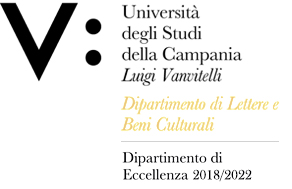Insegnamento di STORIA DEL RESTAURO
Corso di laurea in CONSERVAZIONE DEI BENI CULTURALI
SSD: L-ART/04
CFU: 12,00
ORE PER UNITÀ DIDATTICA: 60,00
Periodo di Erogazione:
Italiano
| Lingua di insegnamento | italiano |
| Contenuti | Teoria e storia del restauro dall’antichità ai giorni nostri: restauro archeologico, architettonico, pittorico e scultoreo; concetto di recupero e di reimpiego; l’Antico dal Rinascimento al Settecento. Il restauro moderno: teorie e interventi fra Otto e Novecento. La tutela dei monumenti e delle opere d’arte nel Novecento. |
| Testi di riferimento | S. Casiello (a cura di), Verso una storia del restauro. Dall'età classica al primo Ottocento, Firenze, Alinea 2008. |
| Obiettivi formativi | Il corso si pone l'obiettivo di fornire allo studente gli strumenti necessari ad un primo approccio alla storia del restauro e alle principali tipologie di interventi conservativi. Esprimendosi in forma chiara e appropriata e avvalendosi della terminologia più consona, alla fine del corso lo studente sarà tenuto a interpretare criticamente le diverse fasi del dibattito teorico sul restauro e sulla tutela del patrimonio artistico, dimostrando nel contempo una buona conoscenza delle diverse fasi del restauro e della conservazione. |
| Prerequisiti | È auspicabile la conoscenza delle nozioni di base di archeologia e della storia dell’arte e dell’architettura antica e moderna. |
| Metodologie didattiche | Lezioni frontali, sopralluoghi, partecipazione a convegni, seminari e conferenze. |
| Metodi di valutazione | Prova orale. La valutazione dell'esame avverrà sulla base della coerenza delle risposte e sulla base della correttezza linguistica, tenendo conto della completezza delle conoscenze specifiche del candidato. |
| Altre informazioni | Le slides proiettate durante il corso verranno progressivamente messe a disposizione degli studenti, e saranno di supporto ai testi di riferimento. |
| Programma del corso | - Il concetto di restauro. |
English
| Teaching language | italian |
| Contents | Theory and history of restoration from antiquity to nowadays: archaeological, architectural, pictoral and sculptural restoration; the concept of recovery and reuse; the Ancient from the Renaissance to the eighteenth century. The modern restoration: theories and interventions between |
| Textbook and course materials | S. Casiello (a cura di), Verso una storia del restauro. Dall'età classica al primo Ottocento, Firenze, Alinea 2008. |
| Course objectives | The aim of the course is to provide students with the instruments to a first analysis of the history of restoration and the main types of conservation interventions. At the end of the course the students will have to interpret critically the different phases of the theoretical debate on restoration, while demonstrating a good knowledge of the various restoration and conservation operations. |
| Prerequisites | It is desirable the basic knowledge of the archaeology and of the history of ancient and modern art and architecture. |
| Teaching methods | Lectures, inspections, partecipations in conferences and workshops. |
| Evaluation methods | Oral exam. Exam assessment is based on the overall level of student performance which takes into account knowledge of course content and clarity, accuracy and appropriacy of language use. |
| Other information | The slides used during lectures will be made available to the students, and will form an integral part of the study material. |
| Course Syllabus | - The concept of restoration. |








